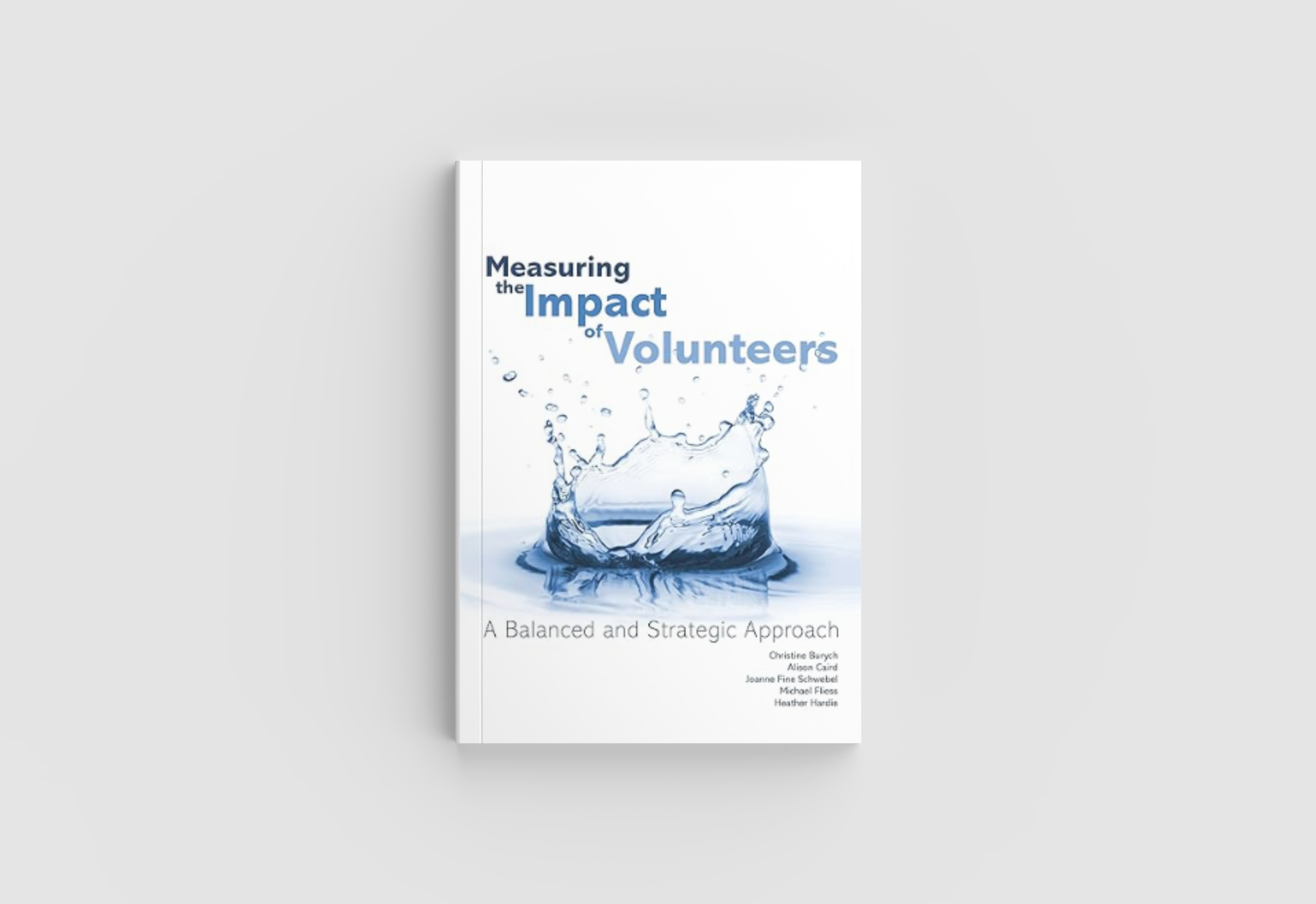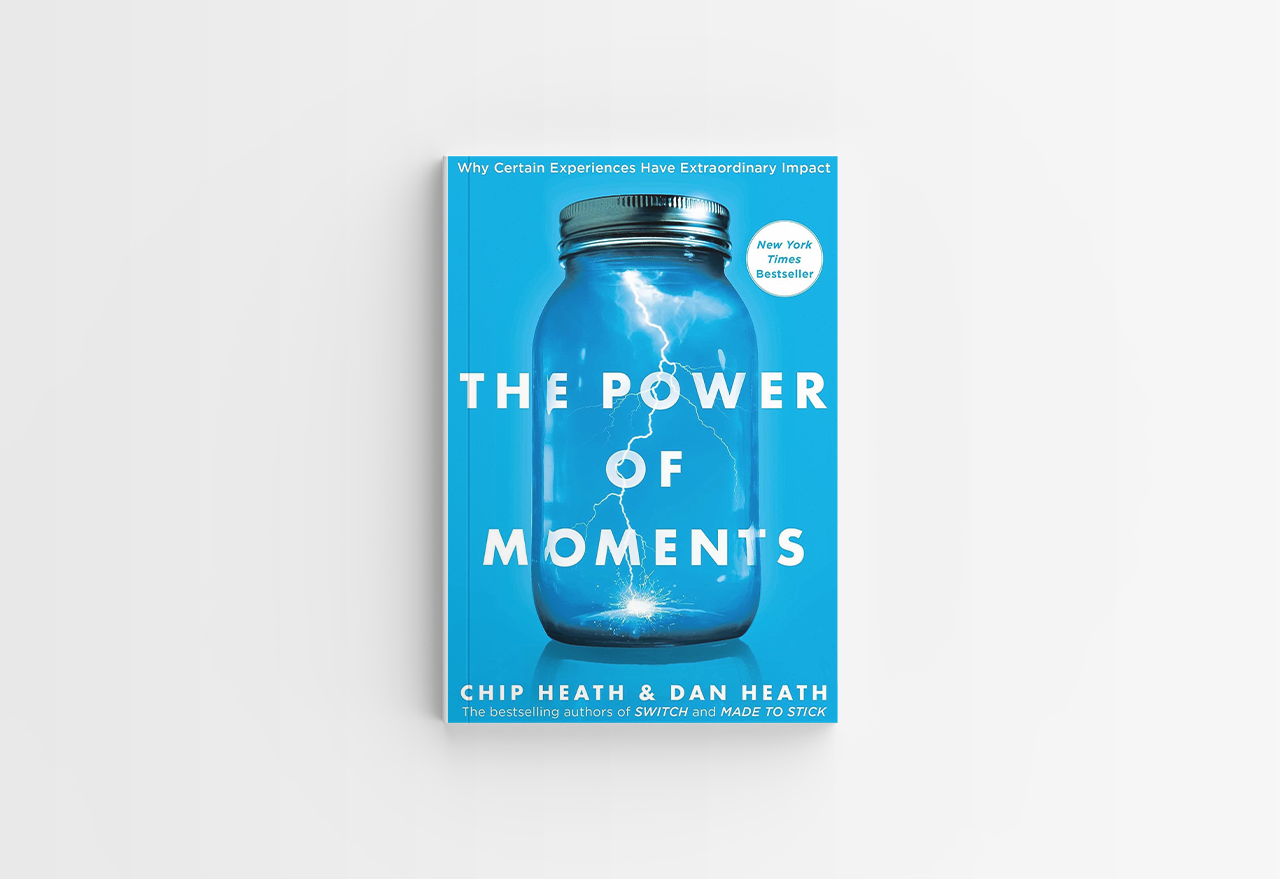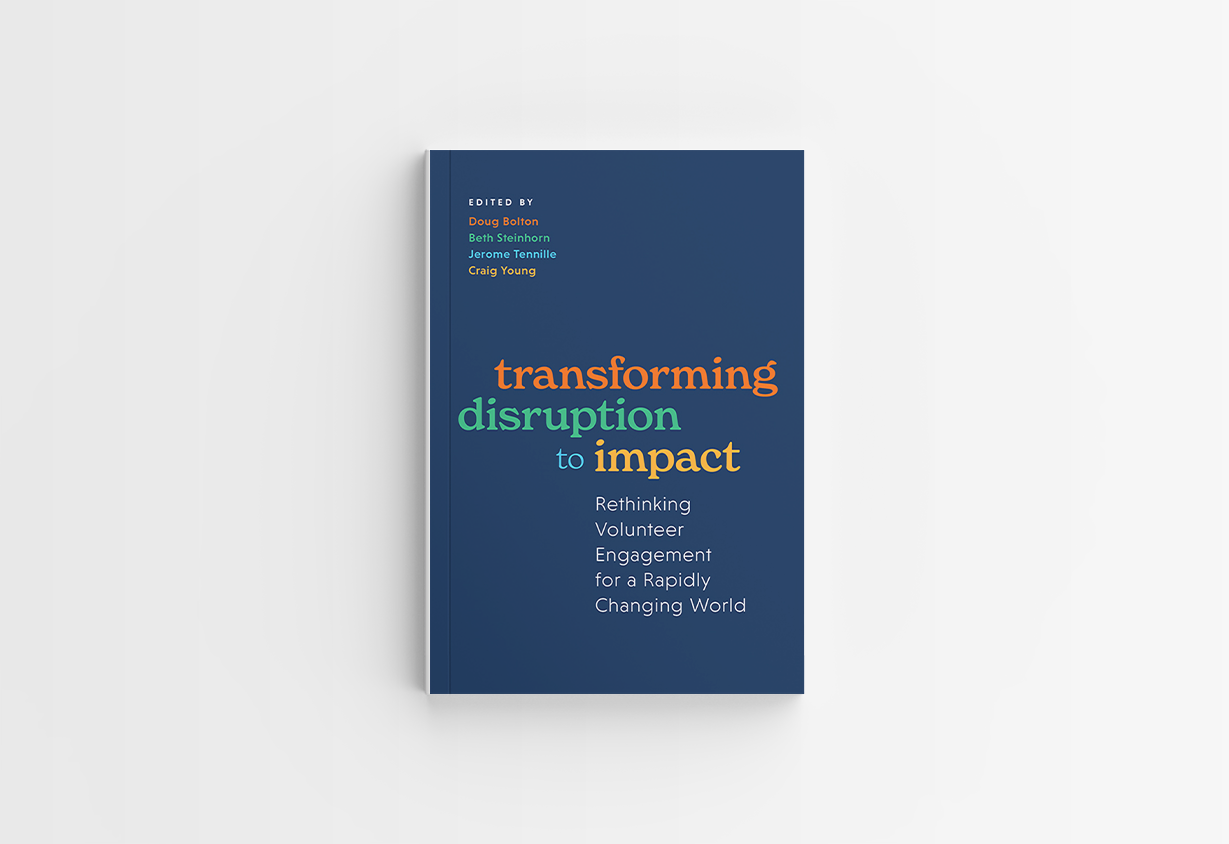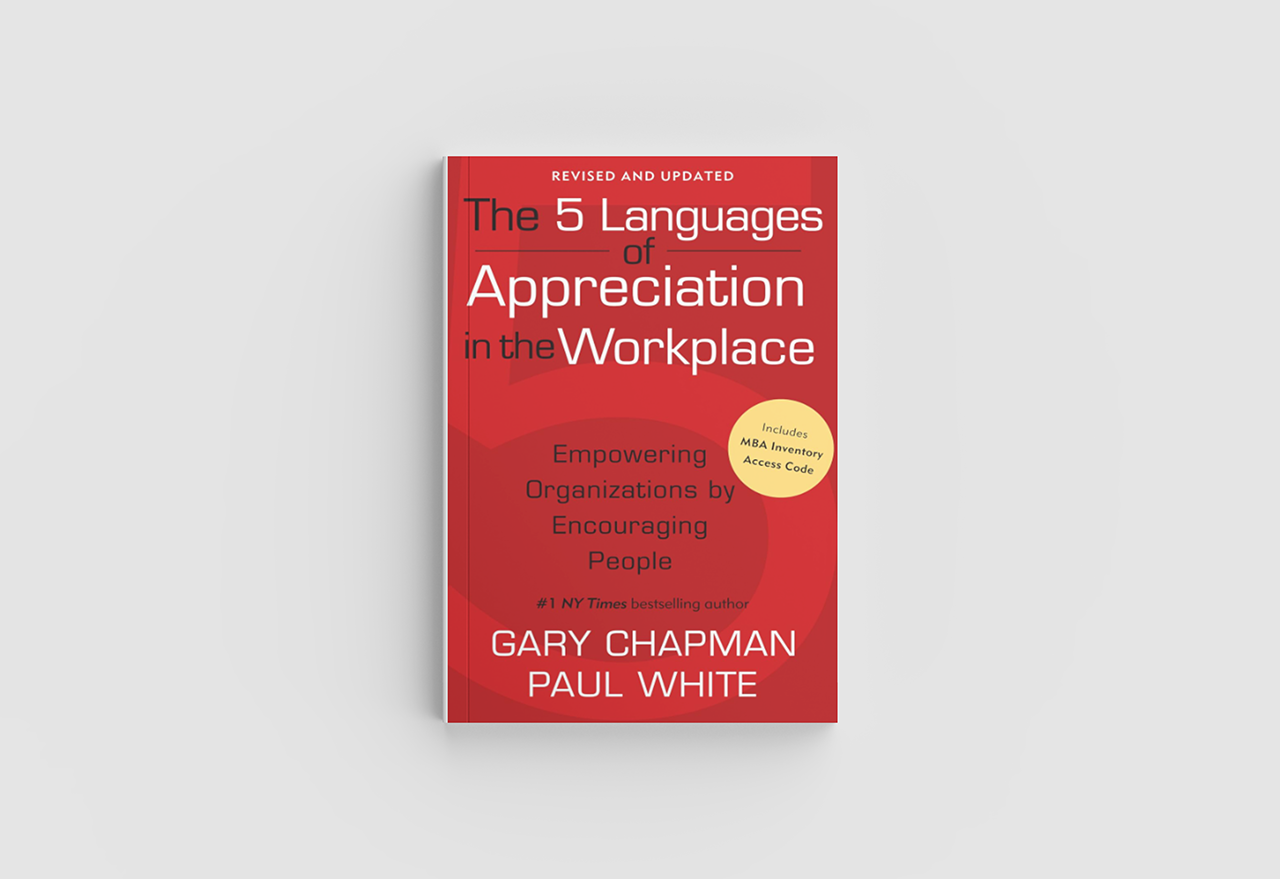BOOK BITES: The Power of Moments: Why Certain Experiences Have Extraordinary Impact
This Month's SelectionThe Power of Moments: Why Certain Experiences Have Extraordinary Impact Authored by: Chip Heath , Dan HeathThe twelfth in a...
11 min read
 Corina Sadler, CVA
Apr 29, 2022 9:00:00 AM
Corina Sadler, CVA
Apr 29, 2022 9:00:00 AM

by Christine Burych, Alison Caird, Joanne Fine Schwebel, Michael Fliess, and Heather Hardie
The third in a series of Better Impact Book Bites – A taste of great books worth consuming.
Every other month I’ll choose a volunteer management specific book that needs to be on the shelf of every volunteer engagement pro. This title came out in 2016, and I found it unique. It stood out not only for its size – as it’s more like a workbook – but it boasted a quintet of authors. They were from the healthcare sector in Canada and wanted to create a standard way to measure the impact of volunteer involvement from a balanced perspective.
Many webinars and blog posts in 2021 referenced this book. I noticed it readily available at Energize Inc. and knew it was calling to me. When I finished reading it the first time, I searched for others who had written a review and found this one from Susan J. Ellis for NTEN. Tony Goodrow, CEO of Better Impact, references this title as especially good at breaking the default standard of the sharing of volunteer hours and numbers to show impact. If you read this book, why did you choose it?
All volunteer engagement pros should pick up this title and review the finer points with their boss. For older volunteer programs who’ve stuck to the same reporting models, it would be helpful to see if the balanced method described here has impact.

If you have a colleague who recently took over as a manager or supervisor over a volunteer program, this topic should be on their radar. If they oversee goal setting, strategic planning, and the overall vision for the volunteer program and how measurables are reported, gift them this one. The goal of the book is to teach volunteer managers how to make their own Volunteer Resources Balanced Scorecard, which provides more effective means of measuring the outcomes and impact of volunteer engagement, and how it aligns with the vision, mission, and strategic plan of an organization.
Do find your own answer to this question. (Chapter One)
“Is the only reason to have volunteers that they are less costly than hiring more employees?” We touched on a bit of this in my review of From The Top Down, but it’s an important question. Most organizations (save a few) would not pay for the activities performed by volunteers, so is it really savings? “It is abundantly clear that the value added by volunteer contributions cannot be measured from a purely monetary perspective.” This is a challenging concept all around since historically we’ve equated the same handful of figures to prove why the volunteer program should exist within an organization. What are reasons you’ve used to justify engaging volunteers beyond them being “free” compared to hiring more staff?
Do get a good grasp on the vision, mission, and strategic plan of your organization. (Chapter Two)

These three tools are critical in that they define strategy, provide organizational focus, guide decision making and provide a template for allocating resources.” Going into a new organization can feel overwhelming for new volunteer engagement pros. They are figuring out what was left for them in the structure of the volunteer program, along with adjusting to their new workplace culture. It’s important not to wait too long to find and connect with these three important pillars. Practitioners in my certificate program are asked if volunteers are mentioned in their strategic plan. They should have an answer, good or bad. It’s important to know.
Do take time to see if a balanced scorecard measurement tool is for you. (Chapter Three)
“The balanced scorecard is a strategic planning and management system that was researched and developed in the private sector by Robert S. Kaplan and David P. Norton in 1992 at the Harvard Business School. It was developed as a means to assess the strength of a business by measuring additional indicators beyond financial ones, permitting decisions to be made on a more balanced perspective of current factors.” When you get this book in your hands and can see the scorecard examples, you’ll most likely connect with this concept. Breaking down goals and trying to align everyone in the organization to common strategies around volunteer engagement is part of what we do. You don’t need a business degree or job in healthcare to see how a scorecard could benefit the way you think about your volunteer program.
Do sit with this chapter in detail. (Chapter Four)
There is a ton to unpack in the fourth chapter. The book gets to the meat of what we should be doing. You’ll notice the example of a Volunteer Resources Balanced Scorecard with Sample Indicators in Table 4. Here are the questions they listed:
For each question they included two to three sample indicators. They identified four perspectives for the scorecard: (1) Build volunteer capacity (2) Enhance the client and staff experience (3) Develop internal and external partnerships (4) Commit to quality improvements. If you’re a volunteer engagement pro like me, these sound great but also sound BIG. Don’t worry, this chapter walks through these four perspectives and identifies what goals would look like in a volunteer program. Which did you spot as true for your program?
Do find the beauty in the steps. (Chapter Five)
I’m a list person. I like my to-do’s. I get great satisfaction when I mark off things on my list. When I see a list of steps in a book, I feel like I can tackle it. The steps that begin on page 33 are what is needed to develop a Volunteer Resources Balanced Scorecard and should be right up our alley as leaders of volunteers.
The following pages will walk you through each step and ask thought-provoking questions like, “Are volunteers spending the majority of their time and energy on the organization’s highest priorities? If not, what are they focused on? Should this continue?” and “Is there a direct connection between what you are measuring and what volunteers are doing?” The part of my brain that loves these prompts is saying, “Corina! These are such great questions. Why haven’t you asked these before?” and it reminds me of my review on the book Curious. The art of asking good questions makes another appearance.
Do follow-up on the reporting you’re doing with a refresh. (Chapter Six)
Page 42 addresses one example that still has me thinking. “A common activity of volunteer management is to interview potential volunteers, and the output most often reported is the number of people who were interviewed. While this is a factual recounting of how the volunteer resources staff have spent their time, what does the number of interviewees alone mean?” It goes on to explain how an outcome measure for this example may be the number of people interviewed who are accepted as volunteers and then fulfill a minimum time commitment, such as “65 percent of accepted volunteers served for at least six months.” This stuck with me because I remember in 2019 boasting about my team holding 208 one-on-one volunteer interviews. That was the news. I stopped there and didn’t go on to explore the outcomes of those 208 volunteers. If I did it again it would take me longer, but there is a richer story to tell as this chapter points out. How do you measure the efforts of interviewing volunteers?
Do spend time figuring out what is important to your board and senior decision makers. (Chapter Seven)
“Is it community engagement? Is it enhancing client satisfaction or patient outcomes? It might be helpful to target data and outcomes for volunteer engagement that reflect the focus of leadership. And do not forget that by soliciting senior management’s feedback on our programs, we are also provided with the opportunity to educate them on what the real impact of volunteers is on the organization.” For leaders of volunteers new to their organization, it is important to read through the strategic plan and find out where volunteers are mentioned and what goals are associated with their support. Are volunteers missing? Are they deeply rooted? Either way, understanding the connection leadership has to volunteerism is an important part of gathering data to fill out the scorecard. The questions we’d ask as volunteer engagement pros are different than the questions leadership would ask.
Do continue to include volunteers as members of the workforce. (Chapter Eight)
“If the goals of the volunteer resources department are aligned with those of the organization, make the case that volunteers are valuable contributors whose work translate into operational goals. Remind your executives that volunteers represent the community served and, therefore, should have a voice in the form of performance indicators.” The unpaid workforce is often the largest segment of the organization’s team. We strive to have volunteers recognized as the powerful force they are by reporting on them, recognizing them, checking up on them, and acknowledging all the other ways we administer the volunteer program. As volunteer engagement professionals, we advocate for their perspective and voices because they matter.
Do be aware of how much data you’re trying to collect through this process. (Chapter Nine)
“Collecting data is not simply about collecting statistics: whatever you collect needs to provide insights to either effect change or keep you on track.” There is an art to creating surveys people will answer and provide valuable information. Training on how to build effective surveys is worth the time. I go back and forth between distributing a short volunteer application vs. a longer one. We don’t want to ask questions in the application process that are not useful. I’d also like to see training on the administration part of leading a volunteer program and how it relates to data collection and showing impact.
Do have vision for how the volunteer program should be in alignment with the entire organization. (Conclusion)
The scorecard can report the value of the volunteer program “in an aligned, strategic manner that speaks the same language as the rest of the organization. It will give credibility to the work that has been done and promote volunteers and volunteer resource management within the organization.” This sounds great! I’d love to see examples of scorecards from volunteer program and get a better understanding of putting this entire process into practice with a small-, mid- and large-sized program. What benefits do you take away from going through this practice?
Don’t simply increase the numbers of volunteers to try to address needs alone. (Chapter One)
“Is it better to have 100 volunteers each giving ten hours a month or 25 volunteers giving ten hours a week?” I still hear of volunteer coordinators who are tasked with getting 100 applications by December. They are asked to do this without any strategy or objectives for what 100 volunteers will accomplish, and what impacts they will have on the mission. It’s a hollow ask, but it makes new volunteer coordinators sweat.
Don’t be afraid to look for and identify the gaps in programming/services. (Chapter Two)

“By identifying gaps, weaknesses, and even strengths that could be expanded, you will find ideas for new volunteer roles.” This short chapter addresses the importance to consult with the staff to see if they agree with the highlighted gaps. Staff always has insights the volunteer coordinator is not privy to or may not understand.
Don’t forget to look at the Human Resources example on page 14. (Chapter Three)
Figuring out what indicators would look like for a balanced scorecard for volunteer programs had me scratching my head at this point in the book. Seeing the card for HR made sense. Their indicators answered questions like, “How do we add financial value?” and “Can we continue to learn and innovate?”
Don’t forget to ask yourself this question. (Chapter Four)
This chapter has many questions to figure out what to enter into your balanced scorecard. Page 23 asked, “Are we maximizing all the resources at our disposal internally and externally?” It goes on to address several good points: “Internally, do we have sufficient technical support? Do we have enough paid and unpaid staffing to accomplish the work of volunteer involvement effectively? Are we utilizing available grants and revenue generation opportunities? Can we streamline our training or administrative processes?” Those were listed under the Maximize Departmental Efficiencies goal.
Don’t sell volunteer impact short. (Chapter Five)
Page 35 lists tactics to measure through the scorecard to increase the effectiveness of volunteers. This topic is something I’d love to see more training on. As professionals we feel accomplishment when we see all the volunteer shifts filled, day after day, week after week. But do we make the time to ask if that is the best use of those hours, of the skills the volunteers bring into our organizations? Do we pause long enough to check to see if the work of volunteers indeed furthers the goals of the organization? What if they’re not? Who will notice? Not to make more work for the leader of volunteers, but I think each career volunteer manager will be inevitably confronted with an ineffective volunteer position, program, or initiative. This book has great ideas to help ask the tough questions.
Don’t be afraid to explore the world of indicators. (Chapter Six)
“The information we get when we measure something is called an indicator, which quantifies achievement of a specific results.” When you hold this book in your hands, you’ll find it easier to work through if setting goals, measurements, and indicators are a new territory for you. By this chapter, don’t give up! If you’re in a healthcare setting, some of the examples will make immediate connections for you, compared to someone at an animal shelter or food bank. But translate the health lingo into something applicable to you.
Don’t forget to partner with staff to create the type of volunteer engagement that meets their needs. (Chapter Seven)

“Have you included your organization’s front-line staff in evaluating your department? Do you survey them about the ease of requesting placements and other departmental processes? Do they have opinions about your responsiveness? Do you have them evaluate the quality of the volunteer’s qualifications, work, and contributions?” I have a training I give about staff and volunteer relations that always leads to a lively discussion about where the volunteer manager fits in this dynamic.
Don’t view information finding as looking bad on the volunteer program. (Chapter Eight)
“Discovering what needs improvement should be considered a positive result because the organization can now problem solve to correct the error.” Answering all these strategic questions might reveal what the volunteer manager already knows: there are areas that need tightening or improvement. I don’t see that as a bad light for the volunteer program. I think this path is another way to lead to innovation. When do we have time to innovate or experience true growth in a volunteer program?
Don’t forget how the scorecard can be used as a planning document. (Chapter Nine)
">This brief chapter starts off featuring a table with no numbers in it. One of the boxes highlights committing to quality improvements to help manage and minimize risk. Another box connects building volunteer capacity to supporting volunteer learning and development.
Don’t miss Appendix A and B. (Conclusion)
The appendix is full of next steps, worksheets, and overviews. If any of these directions feel like a good match for where you are in your program management journey, I’d consider reading through the book and assembling a team to figure out if this will work for your goals.
Oftentimes when I read a book, I pause and my age or my place in time offers context. One of the quotes that stuck with me from the book is, “How can you say you did it well if you do not know what you are measuring against?” I read questions in Facebook groups where volunteer engagement pros are trying to benchmark where they are in their program. They may ask questions like, we had 50% of people show up to orientation – is that good? Staff has asked me for three new volunteers this month – is that too few? So how do we know if we’re leading with excellence and creating robust and diverse volunteer programs, if we are not comparing them in a logical way? I think going through this scorecard process is a great way to show the impact of volunteers across our community, state, country, and world.
The book tells us what we all know: how volunteer engagement measures are typically reported, and why it doesn’t really tell stakeholders much about the true impact of the volunteer work and of the volunteer manager’s efforts. So why haven’t we come up with other ways to describe and measure the impact of volunteers? I wouldn’t say the information isn’t available, but it does require reading and looking for it. Better Impact’s CEO Tony Goodrow did a presentation on ROI in Volunteer Programs at the Texas Volunteer Management Conference years ago, and I was in the audience. It was awesome, and I knew he was onto something. Tony wrote great thoughts on this for Engage with “Calculating the ROI of Your Volunteer Program – It’s Time to Turn Things Upside Down.” It’s a membership article found here. I recommend having a read.
I’d love to hear what you think of this Volunteer Resources Balanced Scorecard approach after you check out everything the book has to offer. There are great tools practitioners can apply with effort and support. We have access to so much information on our volunteers and programs. Let’s put it to work and measure impact in new and meaningful ways.
I have my eye on a few titles to choose from since my next review will be a non-volunteer engagement specific read. Have one to suggest while I make my pick? Put it in the comments below.
Better Impact along with the Association of Leaders in Volunteer Engagement and Volunteer Management Professionals of Canada are once again hosting an incredible virtual conference this October 2022. The theme fits perfectly with this book - IMPACT EVALUATION: Data that Matters & Creating the Right Story.
Check it out here: https://hubs.li/Q017Rx9-0.
Veronica Deally - Why Volunteers Deserve Their Own Annual Report
Adam Shilling - What's In It For Them? Persuading Leaders and Decisions Makers
Maura Fitzpatrick - Positioning Yourself as the Expert and Communicating with Impact and Confidence
Tony Goodrow – The Relative Impact Model for Measuring the ROI of Volunteer Engagement
Is your Volunteer Organization seeking a better way to save time, money and mitigate risk?
Learn how Better Impact's Top-Rated Volunteer Management Software Solution can help your Volunteer Organization with:
Start your Free Volunteer Management Software Trial Today!
Featured Posts

This Month's SelectionThe Power of Moments: Why Certain Experiences Have Extraordinary Impact Authored by: Chip Heath , Dan HeathThe twelfth in a...

This Month's SelectionTransforming Disruption to Impact: Rethinking Volunteer Engagement for a Rapidly Changing World Edited by Doug Bolton, Beth...

This Month's SelectionThe 5 Languages of Appreciation in the Workplace: Empowering Organizations by Encouraging People, by Gary Chapman and Paul...